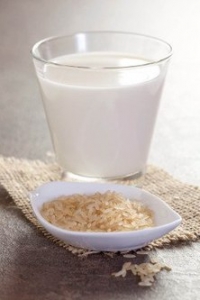Production and processing of milk. Forecast for the Republic of Belarus

The expert noted that over the past five or six years, a qualitative leap in the increase in the supply of raw milk in Belarus was observed only in 2020. That season, two factors coincided to increase milk production: a good own harvest (2019) and low world prices for concentrated fodder (second half of 2019 - first quarter of 2020). Unfortunately, the last two feed preparations, incl. the current one is significantly inferior to the autumn of 2019.
Livestock during this time is virtually unchanged. But now the dynamics is downward: the negative trend that began at the end of 2020 has continued into the current season. Maxim Fasteev expects -1% at the end of the year and in 2022 predicts a more significant livestock optimization.
Decline in livestock, poor harvest, high feed prices, an increase in the share of unprofitable agricultural organizations and the risks of reducing direct subsidies - all these factors point to a decrease in the volume of production and processing of raw milk in the republic.
“Only the high purchase price of raw milk can act as a counterbalance, which at the same time remains much lower than the prices of its neighbors: the Russian Federation, Ukraine, Lithuania, as well as hopes for next year’s harvest,” Maxim Fasteev wrote.
“Production and receipt of raw materials for processing by the population (yes, there is such milk in the Republic of Belarus ) is insignificant in the total mass. In recent years, the category has been declining rapidly.”
He added that the share of marketable milk in the total shaft of agricultural organizations is growing (90% in the current season), but at the same time it is noticeably lower than the Russian Federation or Ukraine, which indicates the use of large volumes for calf feeding.
“According to the results of three quarters, the volume of raw materials received for processing in the Republic of Belarus slightly exceeds the figures for 2020 (+0.6%), the difference at the end of the year should practically level out. PionerProduct's forecast for 2022 is 6.8 million tons, which is 1.2% lower than the preliminary result of the current season,” Maxim Fasteev concluded.
He also presented graphs, production and processing of raw milk, which use actual Belstat data and PioneerProduct forecasts:
dairynews.ruRead together with it:
- Как дегустаторы "разбирают" вкус сыра и какие этапы проходит каждый образец, рассказала экспертЕкатерина Беспалова Заведующая отраслевой лабораторией биохимии, микробиологии и технологических процессов переработки молока Института мясо-молочной промышленности Республики Беларусь Представьте себе мир, где вкус - это профессия. Где каждый оттенок аромата имеет значение, а малейшее отклонение от нормы не остается без внимания. Сенсорный анализ - это не просто дегустация, а целая наука, изучающ...
- В 2025 году возрожденный молокозавод в Иванове наладил стабильный выпуск 13 новых видов продукцииЗа год на молокозаводе «РумелкоАгро – Молоко» в Иванове выпустили на рынок 13 видов продукции, в том числе шесть новых продуктов – два вида творога и четыре вида йогурта – за последний месяц. В среду, 22 октября, губернатор Станислав Воскресенский ознакомился с производством новых продуктов и обсудил с руководством предприятия планы по дальнейшему развитию переработки молока. «Завод, как мы и гово...
- Повышенное внимание - безопасности пожилых. В Могилеве обсудили работу по Директиве №130 октября, Могилев. Сегодня в Могилевском облисполкоме прошло заседание, посвященное реализации Директивы Президента Республики Беларусь от 11 марта 2004 г. №1 "О мерах по укреплению общественной безопасности и дисциплины". Особое внимание во время обсуждения уделили безопасности пожилых людей, передает корреспондент БЕЛТА.Как отметил во время своего доклада заместитель председателя Могилевского ...
- На БУТБ началась реализация желатина для фармацевтической промышленности28 октября, Минск. На Белорусской универсальной товарной бирже началась реализация желатина для фармацевтической промышленности, рассказали БЕЛТА в пресс-службе БУТБ. БУТБ провела первые биржевые торги по реализации специализированного желатина для предприятий фармацевтической отрасли Республики Беларусь. По итогам торговой сессии заключена сделка по покупке 4......
- Около 41 тыс. случаев инсульта ежегодно отмечается в Беларуси27 октября, Минск. Около 41 тыс. случаев инсульта ежегодно происходит в Беларуси. Об этом журналистам сообщил заведующий отделом неврологии и нейрохирургии Минского научно-практического центра хирургии, трансплантологии и гематологии Сергей Марченко на мероприятии, приуроченном ко всемирному Дню борьбы с инсультом, передает корреспондент БЕЛТА. "С начала этого года в нашем центре прошли уже лечени...
- С начала года Московская область увеличила экспорт свинины на 35% в стоимостном выраженииМосковская область продолжает укреплять позиции одного из ведущих экспортеров продукции агропромышленного комплекса в России. По итогам 9 месяцев с начала года регион нарастил экспорт свинины на 35% по стоимости. В натуральном выражении объем поставок составил 85 тысяч тонн, что на 17% больше, чем за аналогичный период прошлого года. В Министерстве сельского хозяйства и продовольствия Московской о...
- Совместные проекты и обмен опытом. В каких направлениях Беларусь и Казахстан готовы развивать сотрудничество в АПК23 октября, Минск. Беларусь готова делиться с Казахстаном опытом в аграрной сфере и заинтересована в дальнейшем расширении партнерства. Об этом заявил первый заместитель премьер-министра Беларуси Николай Снопков на первом Белорусско-казахстанском аграрном форуме, который прошел в Астане, сообщает БЕЛТА со ссылкой на пресс-службу правительства. "Беларусь действительно обладает значительным опытом, ...
- Беларусь и Алтайский край намерены увеличить биржевую торговлю сельхозпродукцией23 октября, Минск. Поставки белорусской мясомолочной продукции в Алтайский край и закупки зерна и семян для аграрного сектора Беларуси определены в качестве магистральных направлений сотрудничества в сфере электронной биржевой торговли. Такая договоренность достигнута по результатам встречи представителей Белорусской универсальной товарной биржи с делегацией деловых кругов Алтайского края, которая...





























































